Powerful Photos Showing The Reality Of The American Civil War
The American Civil War lasted four years, from 1861 to 1865, and was a brutal conflict that threatened to tear the country apart. While the Union ultimately prevailed over the Confederacy, the lasting impact of the conflict would be felt for generations to come.
The Civil War was also noteworthy for being one of the first wars that was extensively documented through photography, which gave the general public a new perception of not just battlefield brutality, but also day to day life of the soldiers tasked with fighting.
Lincoln played a central role.
![Abraham Lincoln at [redacted] During Civil War](https://media.tellmebest.com/wp-content/uploads/2023/09/abraham-lincoln-at-antietam-during-civil-war-30116.jpeg)
By the time hostilities broke out in the Civil War, Abraham Lincoln — the 16th president of the United States — was already a household name. However, his leadership during the conflict helped him cement his legacy.
Lincoln was committed to preserving the Union and was also famous for issuing the Emancipation Proclamation in 1862, which declared enslaved people in Confederate states to be free.
Training was critical.
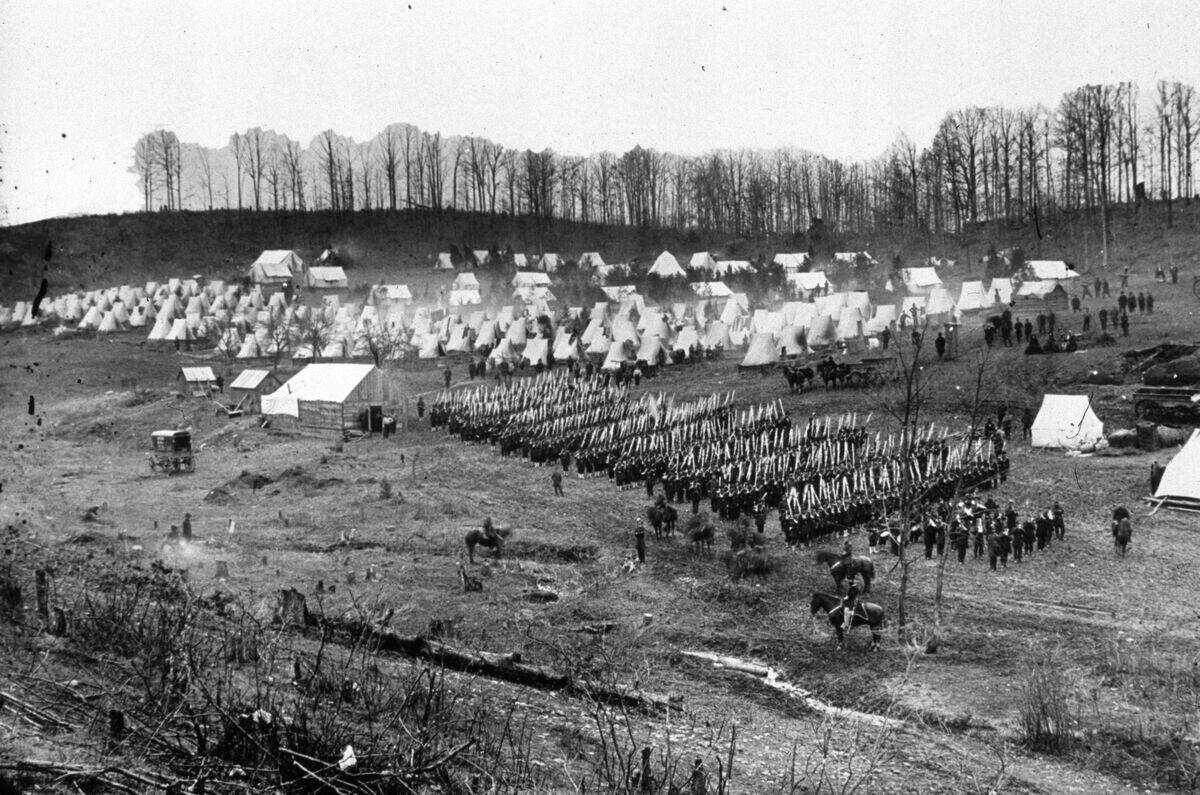
With few soldiers experienced in wartime tactics, it was increasingly important to deliver at least some form of training to troops before they were deployed.
This image shows members of the Union Army’s 96th Pennsylvanian Regiment as they carried out drills at Camp Northumberland, not far from Washington.
Formerly enslaved men fought for the Union.
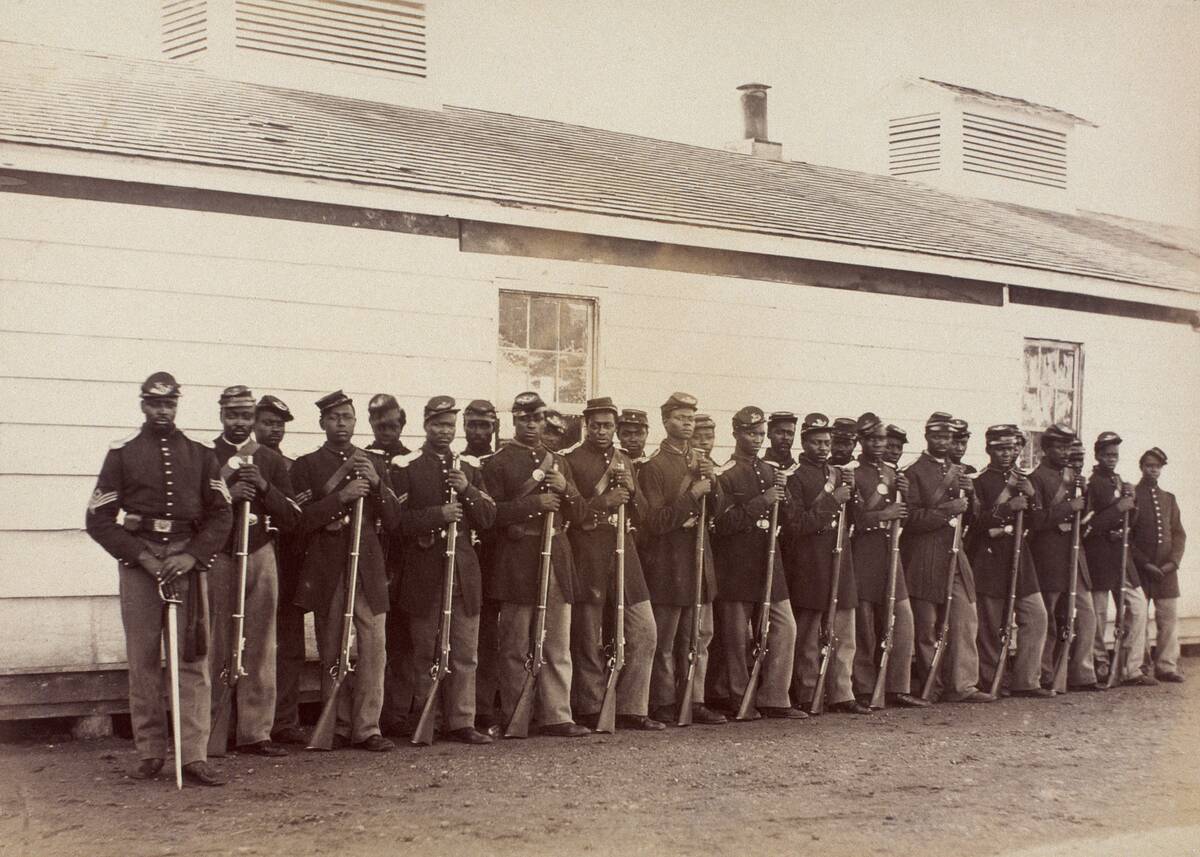
Regiments like the 4th United States Colored Troops (USCT) were formed after the Emancipation Proclamation, which paved the way for Black men to enlist in the Union Army.
These regiments, though segregated, fought bravely on behalf of the Union. The 4th USCT was composed of free volunteers and formerly enslaved men.
Many field hospitals were makeshift affairs.
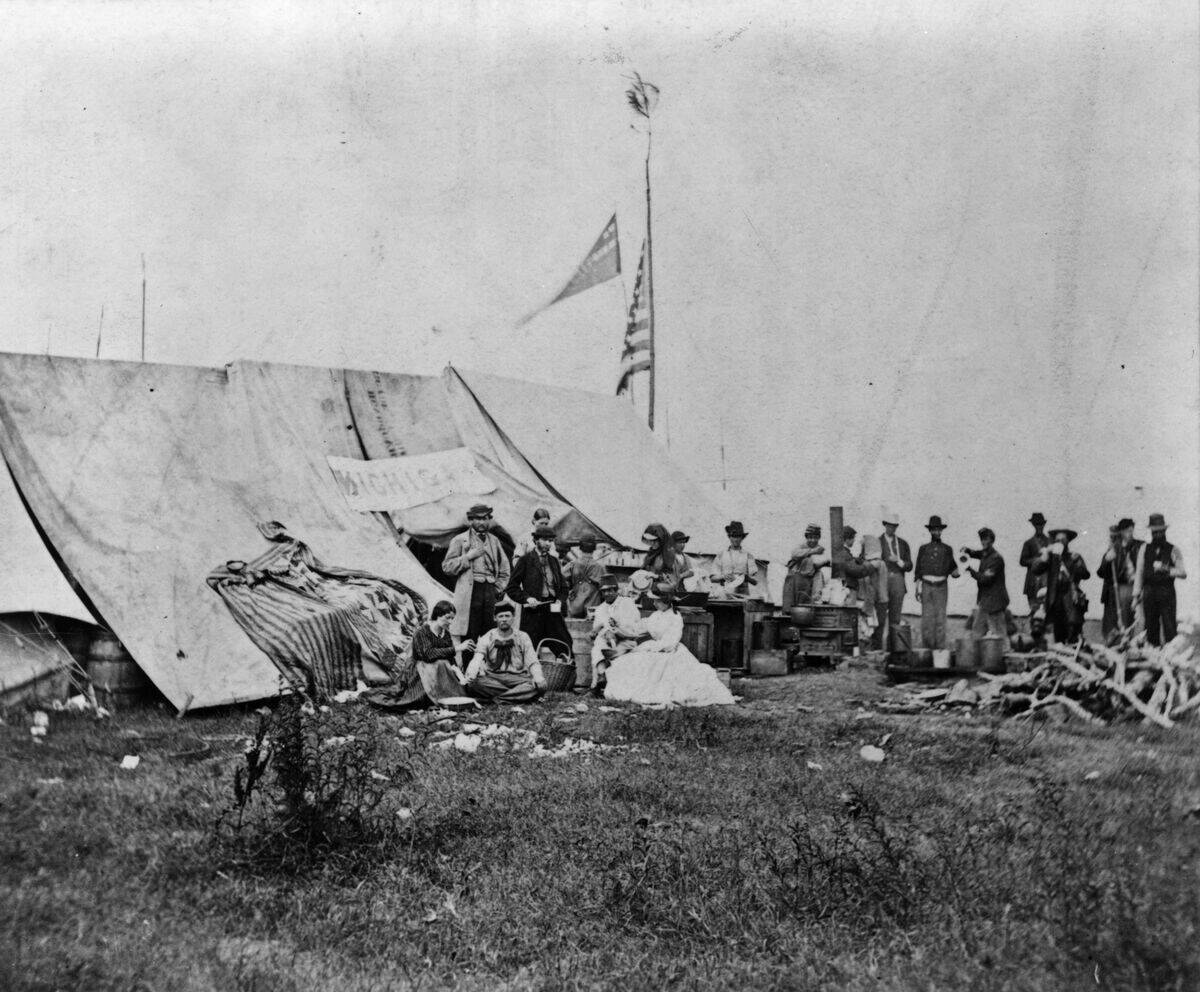
This image shows a rare moment of calm outside of a Union field hospital that was set up by nurses from the Michigan Soldiers’ Relief Society.
While a tent set up in a field was a step up from battlefield surgeons, the interiors of these makeshift field hospitals grew increasingly bloody and chaotic as battles raged on.
Many states got involved.
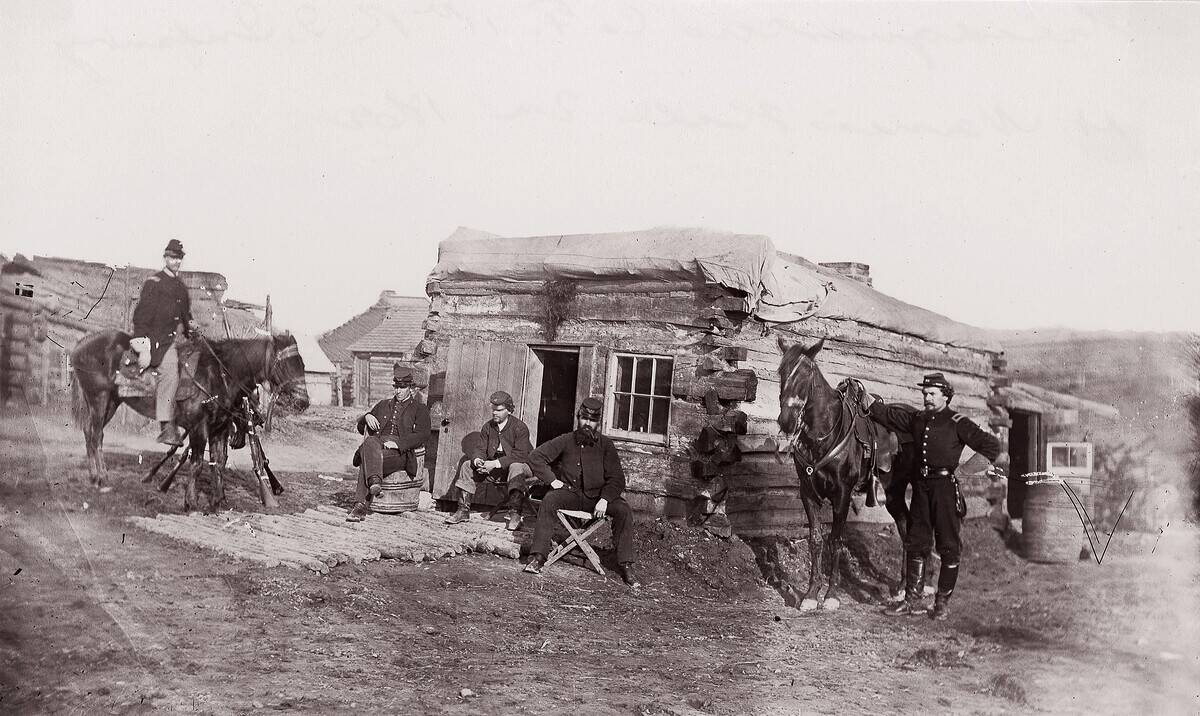
Rhode Island is a state that was far removed from the battlefields of the Civil War, but this small state nonetheless provided volunteers to assist with the Union war effort.
The 11th Rhode Island Infantry Regiment, seen here in Miner’s Hill, Virginia, was a short-lived regiment that saw limited direct conflict but still served a crucial role in contributing to logistical support.
Conditions for wounded soldiers could be grim.
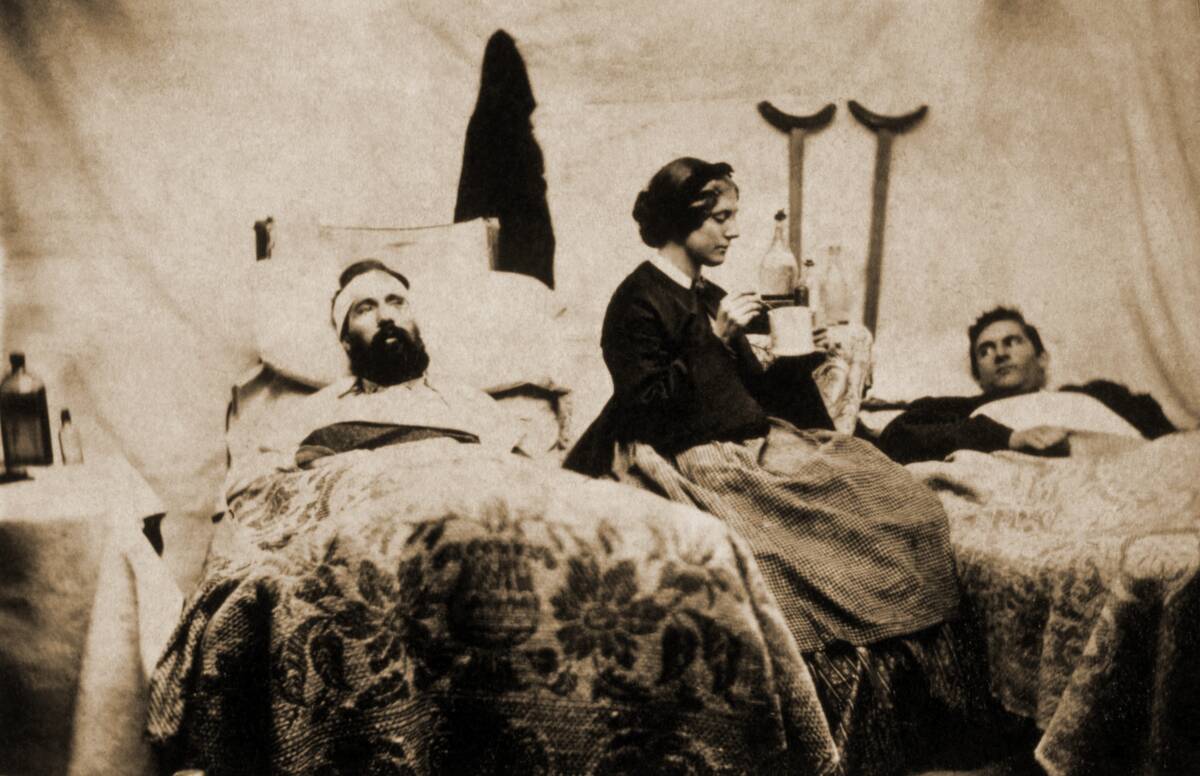
This image shows nurse Anne Bell caring for two wounded soldiers during a moment of calm inside of a field hospital.
Nurses and surgeons frequently dealt with limited supplies and were forced to carry out tasks such as amputations without significant anesthesia, while doing their best to contain diseases such as dysentery, typhoid, and gangrene.
Women were rarely seen at headquarters.
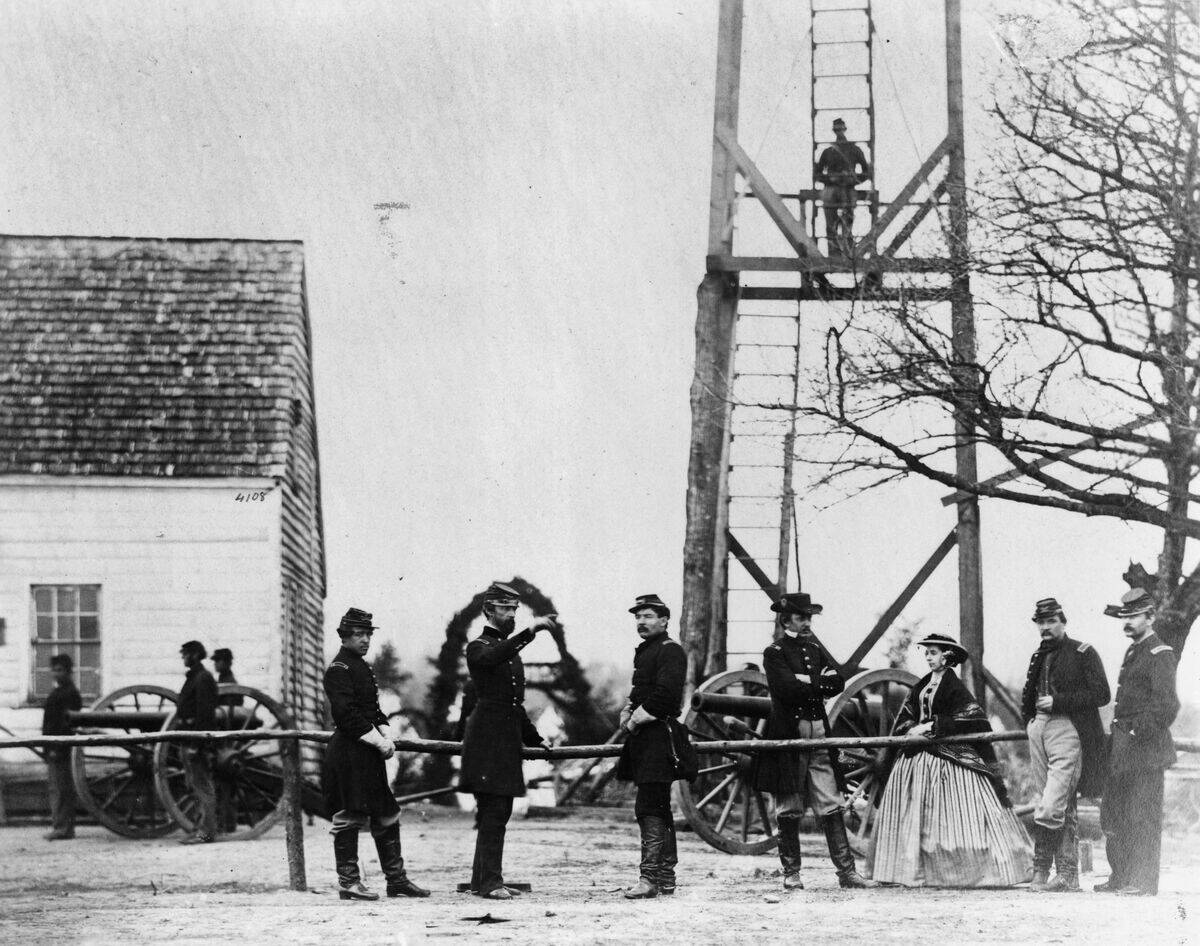
While nurses in field hospitals served an invaluable role during the war, women were rarely seen outside of these settings.
However, this image shows a woman visiting the Union Army headquarters at Miner’s Hill, Virginia. It’s speculated that she was either the wife of a high-ranking officer, or perhaps an agent of the U.S. Sanitary Commission.
The war was extensively photographed.
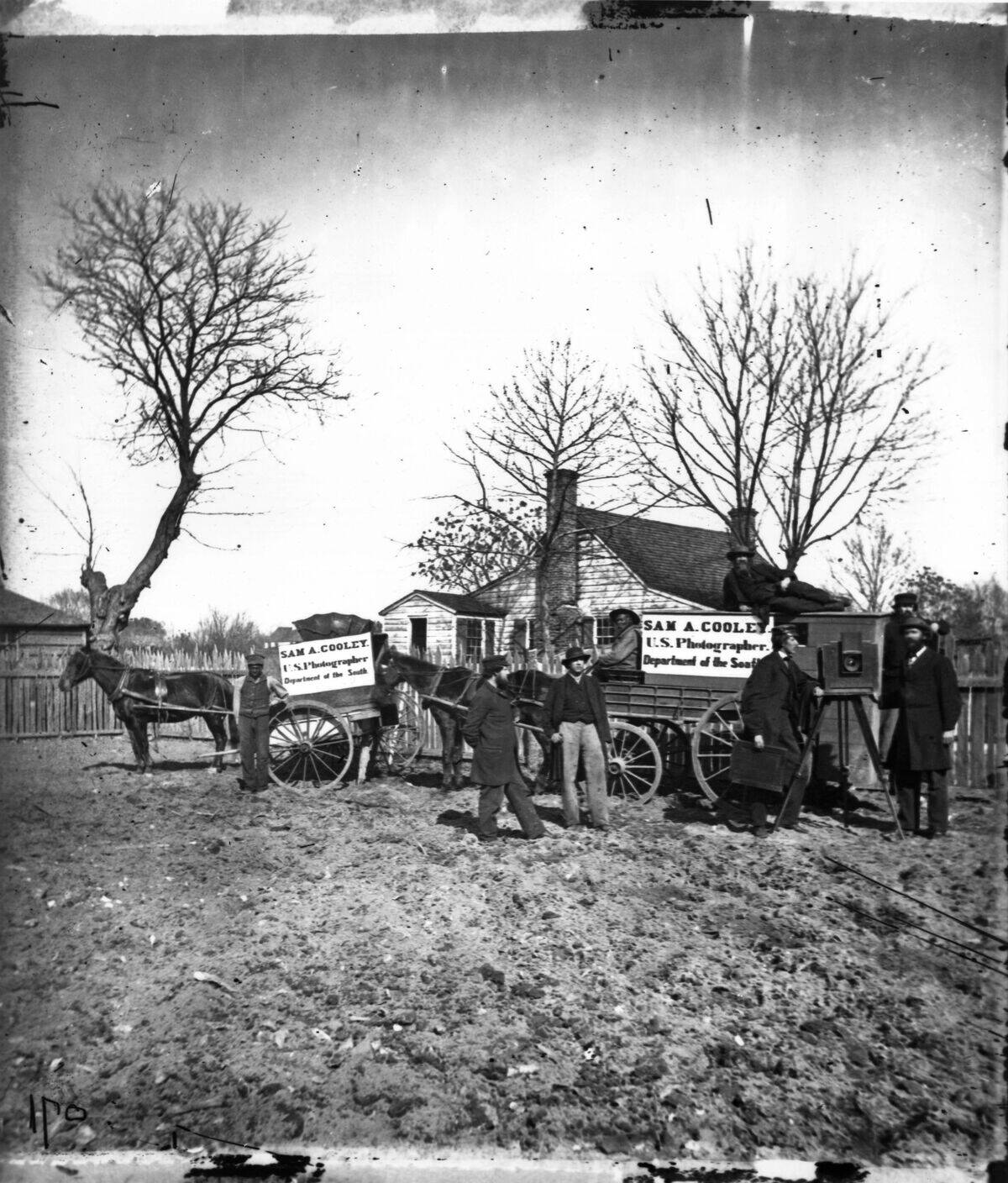
Photographer Sam Cooley and his crew can be seen next to their equipment, which was effectively a mobile photography studio.
These early photographers mostly used wet plate collodion photography, which could be a messy affair. Despite the efforts of Cooley and his crew, most of their plate photographs were destroyed.
Some field hospitals were better equipped than others.
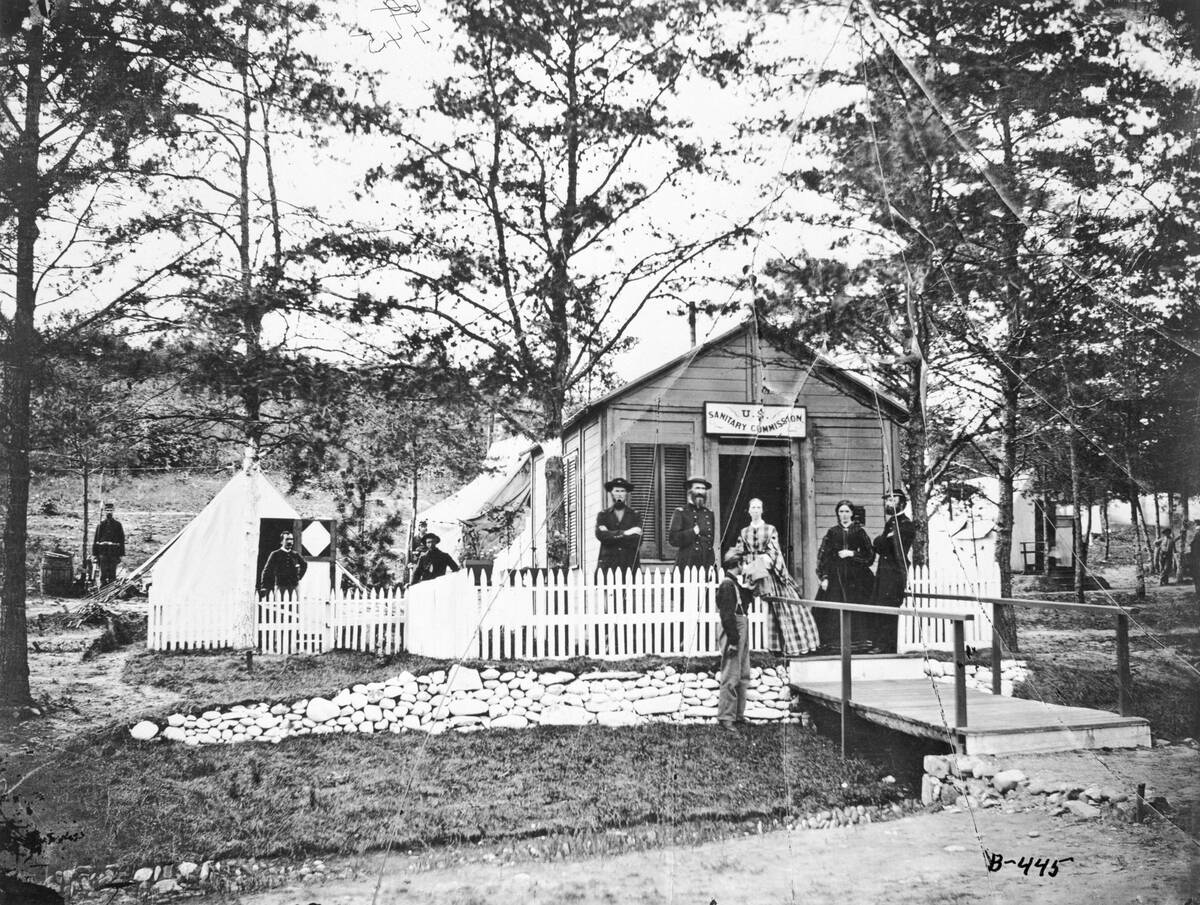
Field hospitals were an absolute necessity, and there was no single template for what one of these facilities might look like.
Some were located in tents, while others made use of existing buildings near the battlefield. This field hospital appears to be more sturdy compared to some of its tent-based contemporaries.
The war made Ulysses S. Grant famous.
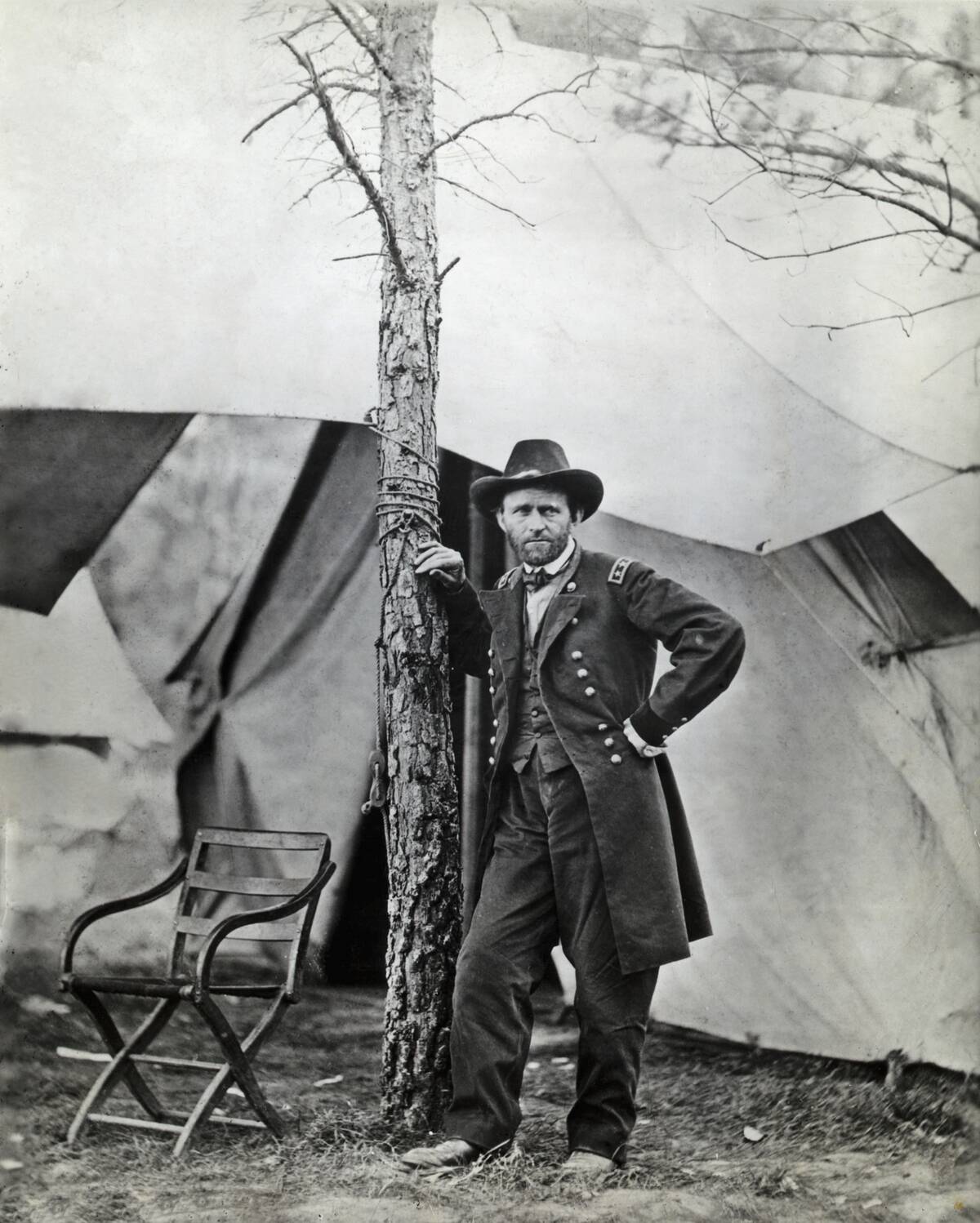
General Grant played a key role for the Union army during the Civil War, outmaneuvering Confederate forces en route to important victories at Fort Donelson and Vicksburg.
Grant’s final victory at Appomattox Court House in 1865 marked the effective end of the war. He would later become the 18th president of the United States.
Journalists marched with armies.
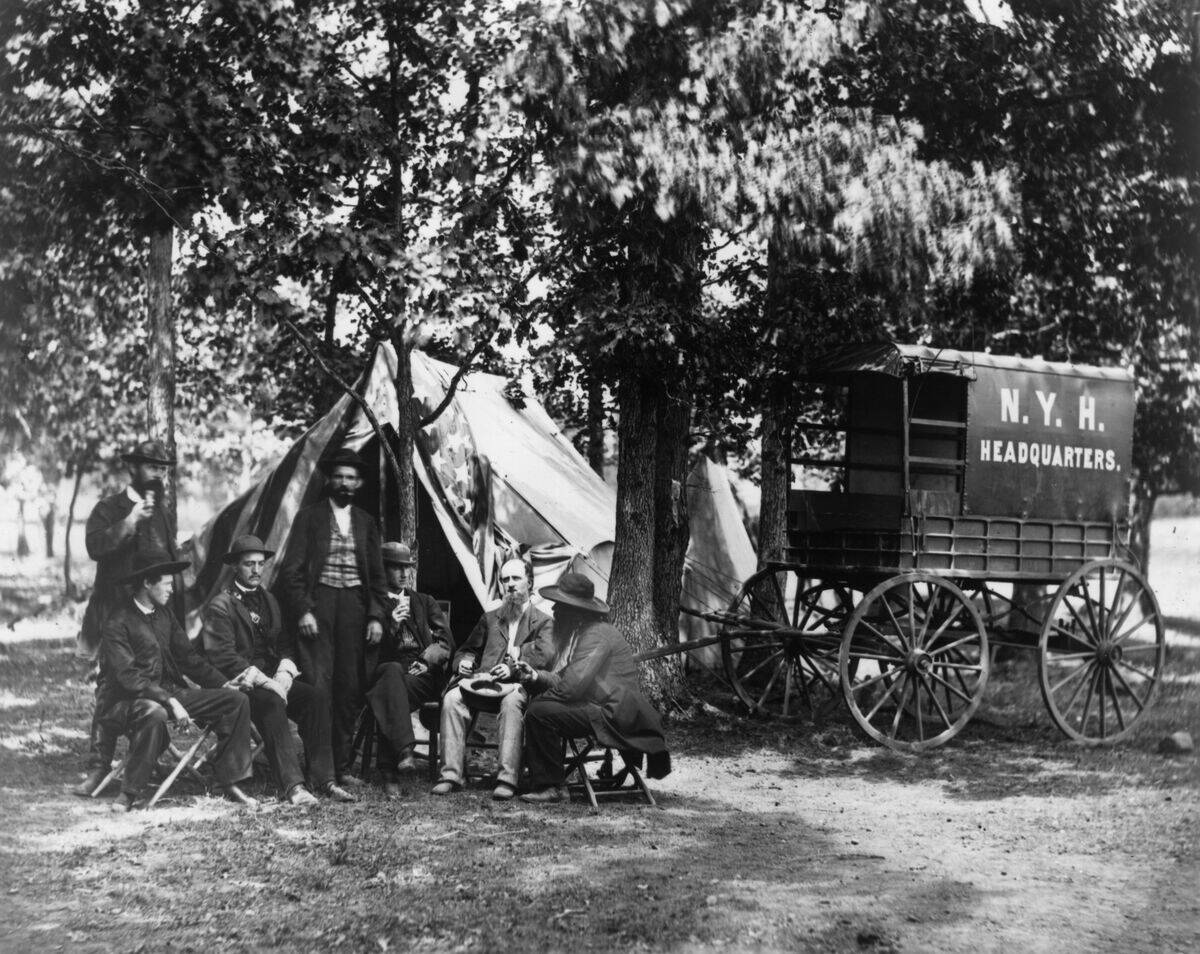
Journalists from the New York Herald can be seen in this photo as they march with the Union Army. During the war, journalists were often embedded with both the Union and Confederate Army.
These “war correspondents” not only represented the changing face of news media, but paved the way for future journalists who reported from the battlefield.
Some cities were heavily damaged.
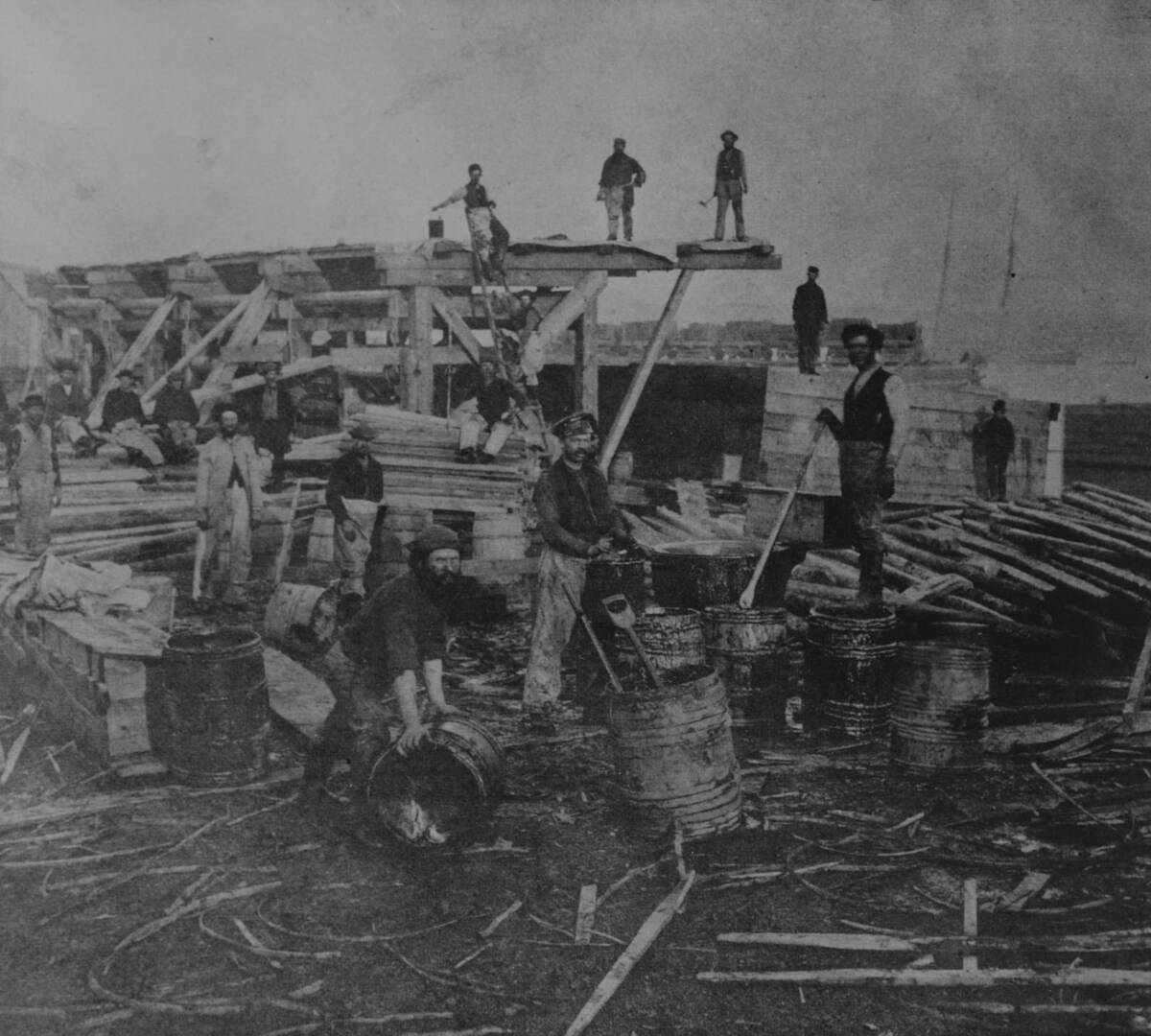
Numerous U.S. cities, particularly in the southern states, were heavily damaged by years of conflict.
Although it isn’t specified where these 1865 reconstruction efforts were taking place, major centers like Atlanta, Richmond, and New Orleans all experienced widespread devastation during the Civil War.
The fighting wasn’t constant.

There’s no doubt that the horrors of war were significant, but soldiers still experienced downtime, as seen in this photo of soldiers relaxing at a Confederate camp.
Breaks were usually filled with routine activities like cooking, cleaning weapons, writing letters and socializing. These brief moments of relaxation helped troops cope with the brutal conditions of war.
Live entertainment was a must.
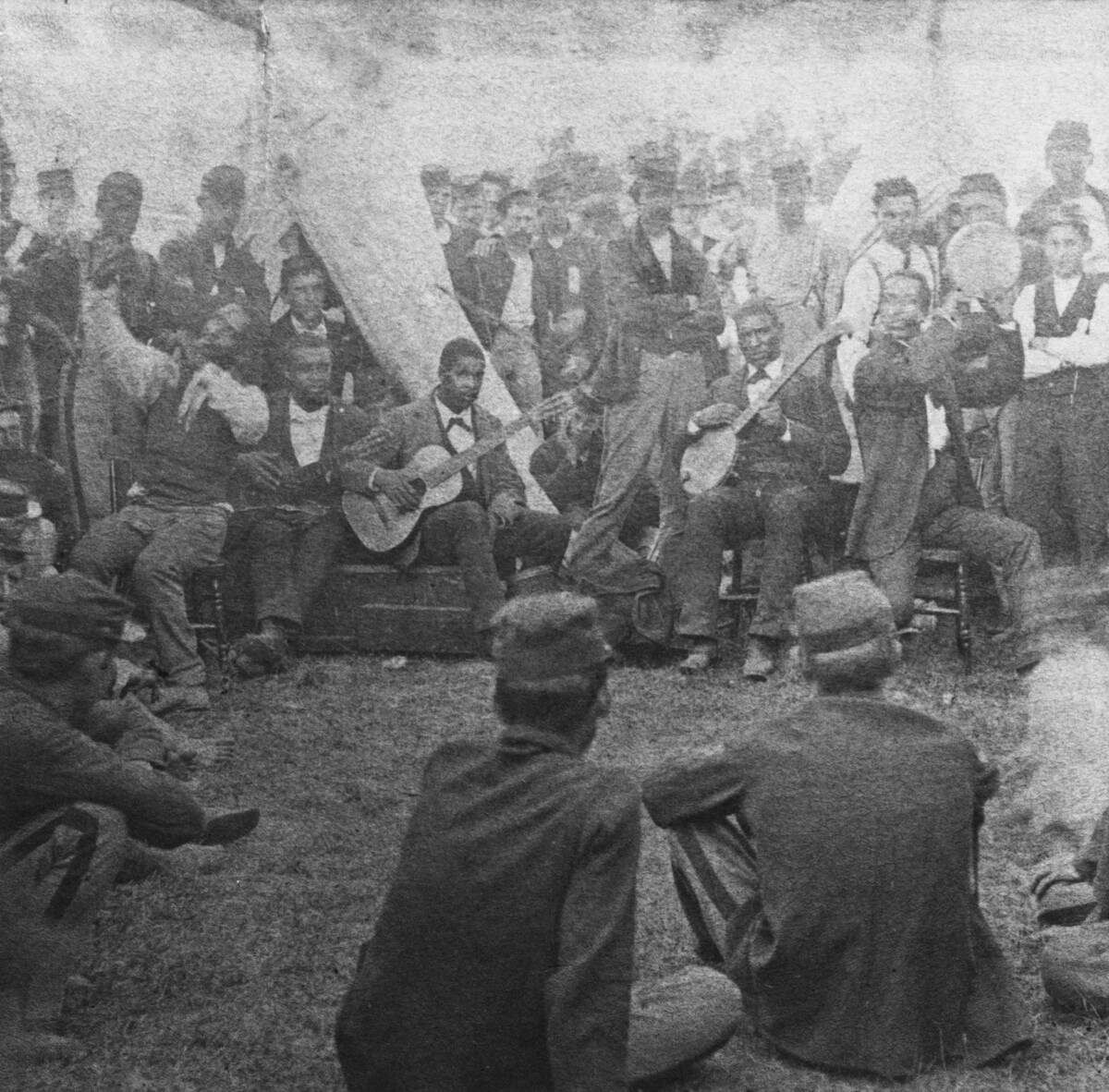
This photo of musicians performing at a Union Army camp represents a favorite pastime of the era: Gathering around a band to enjoy some live music.
While the bands were often improvised, they played popular songs and folk tunes of the era, which made it easy for soldiers to sing along.
Music had a role on the battlefield as well.
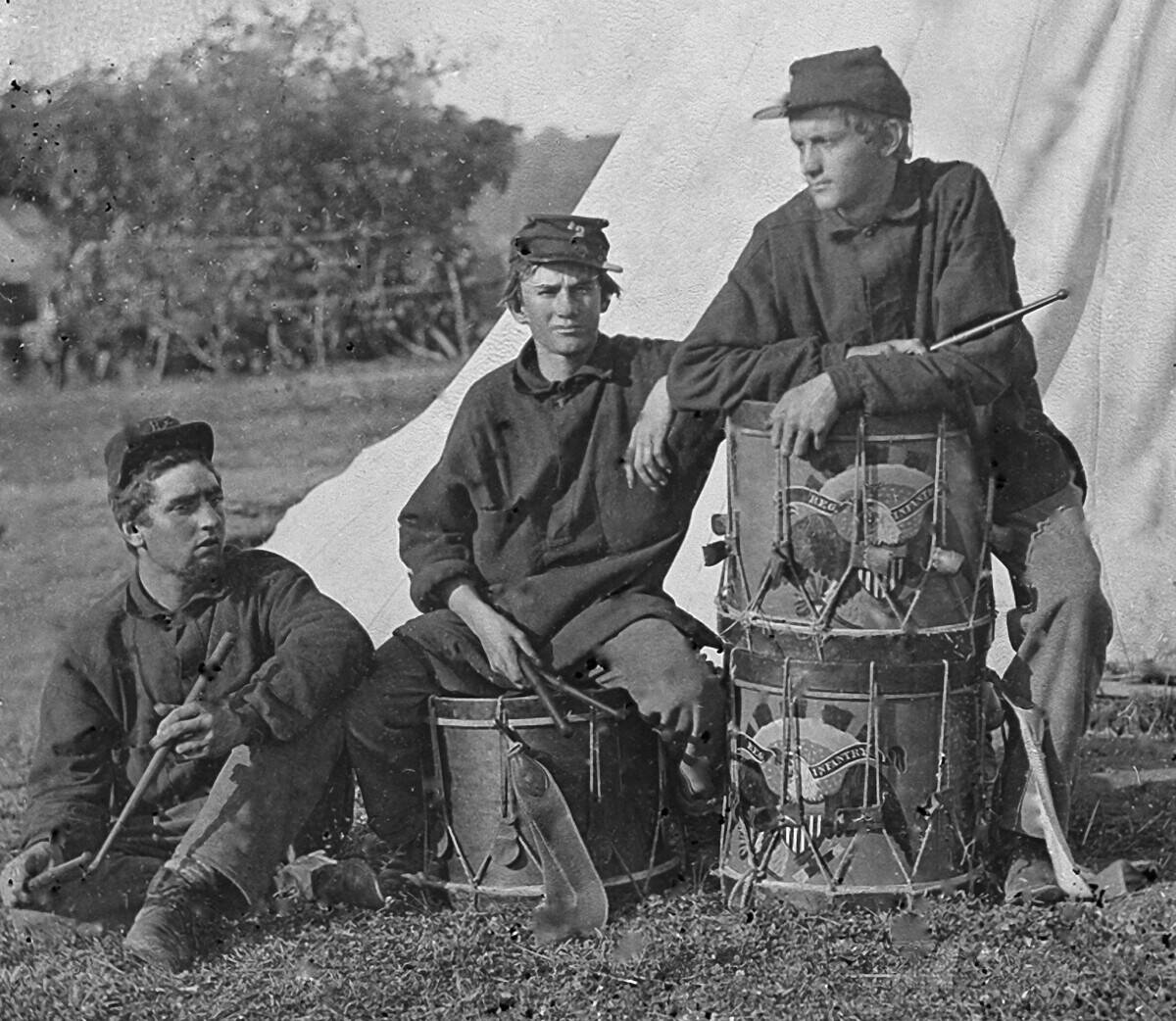
This photo of the 2nd Rhode Island Infantry shows a different kind of Civil War band: The kind that would play not only during parades and camp gatherings but during battles as well.
Drums, bugles, and fifes could be used to signal commands and coordinate movements, while patriotic ditties could help to motivate troops.
The destructive potential of artillery was on full display.
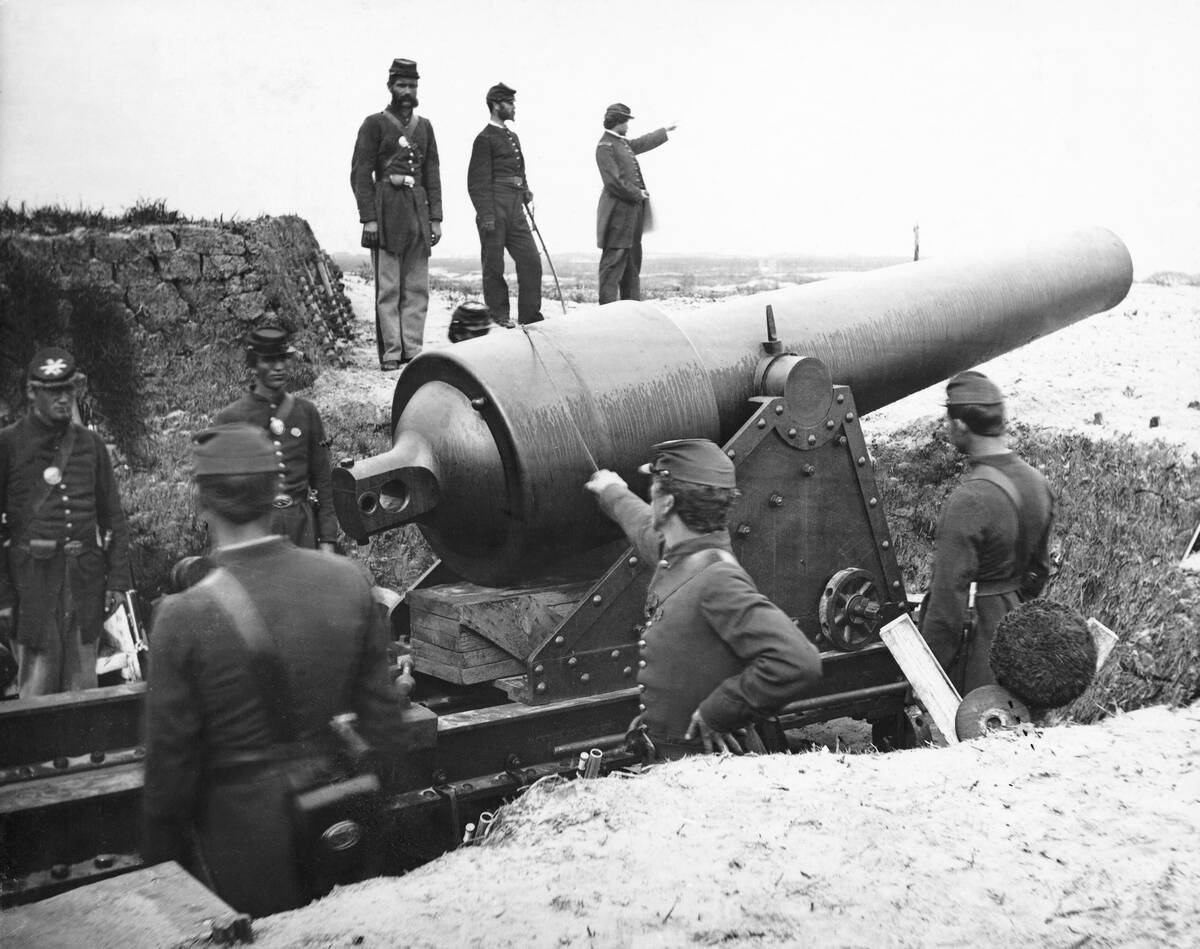
The Civil War represented a major technological step forward when it came to large field guns or artillery, which included subgroups such as cannons, howitzers, and mortars.
These massive guns could fire explosive shells or mortar shots at long distances, making them a significant instrument of destruction.
Charleston endured heavy fighting.
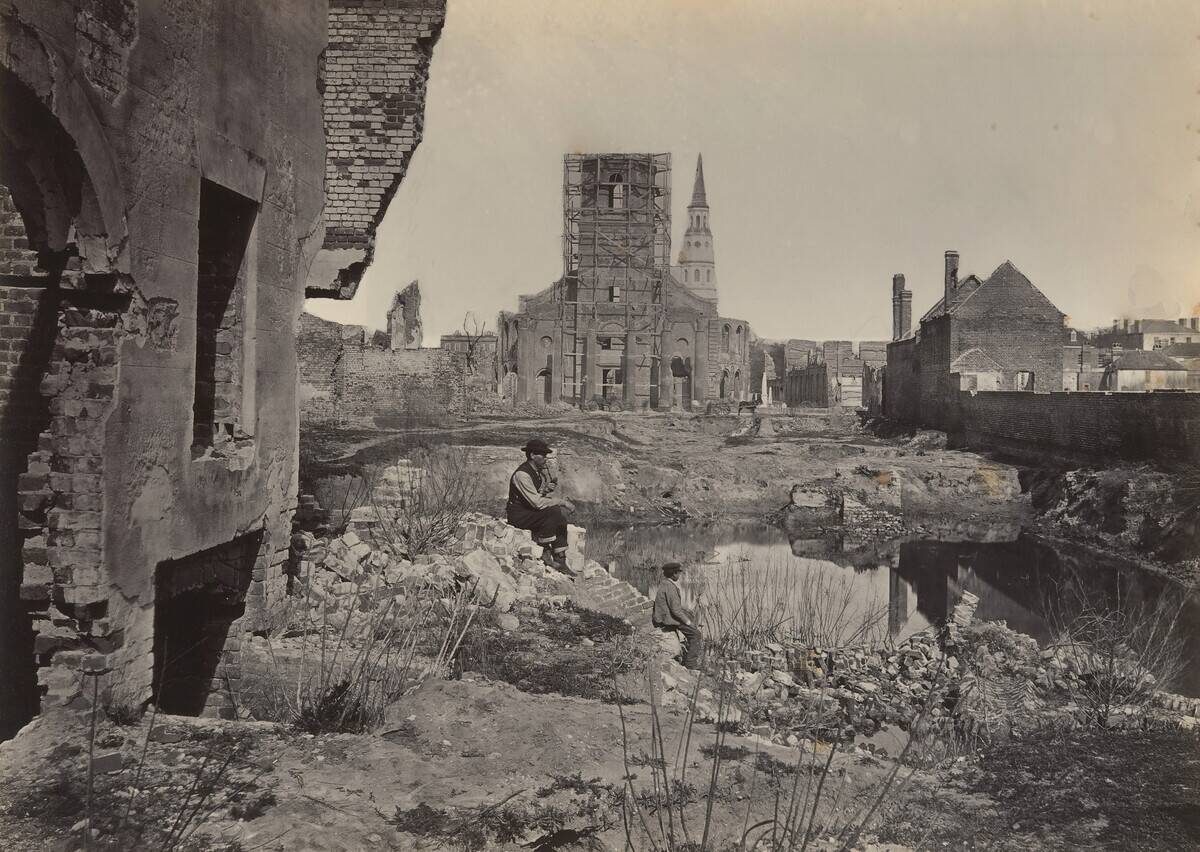
Charleston, South Carolina was a focal point for fighting throughout the Civil War, and was left in ruins after the Confederacy surrendered.
The Siege of Charleston lasted for two years, during which vast parts of the city were destroyed. The city’s recovery was slow, but it gradually built itself back up during the Reconstruction period.
General Sherman left Atlanta in ruin.
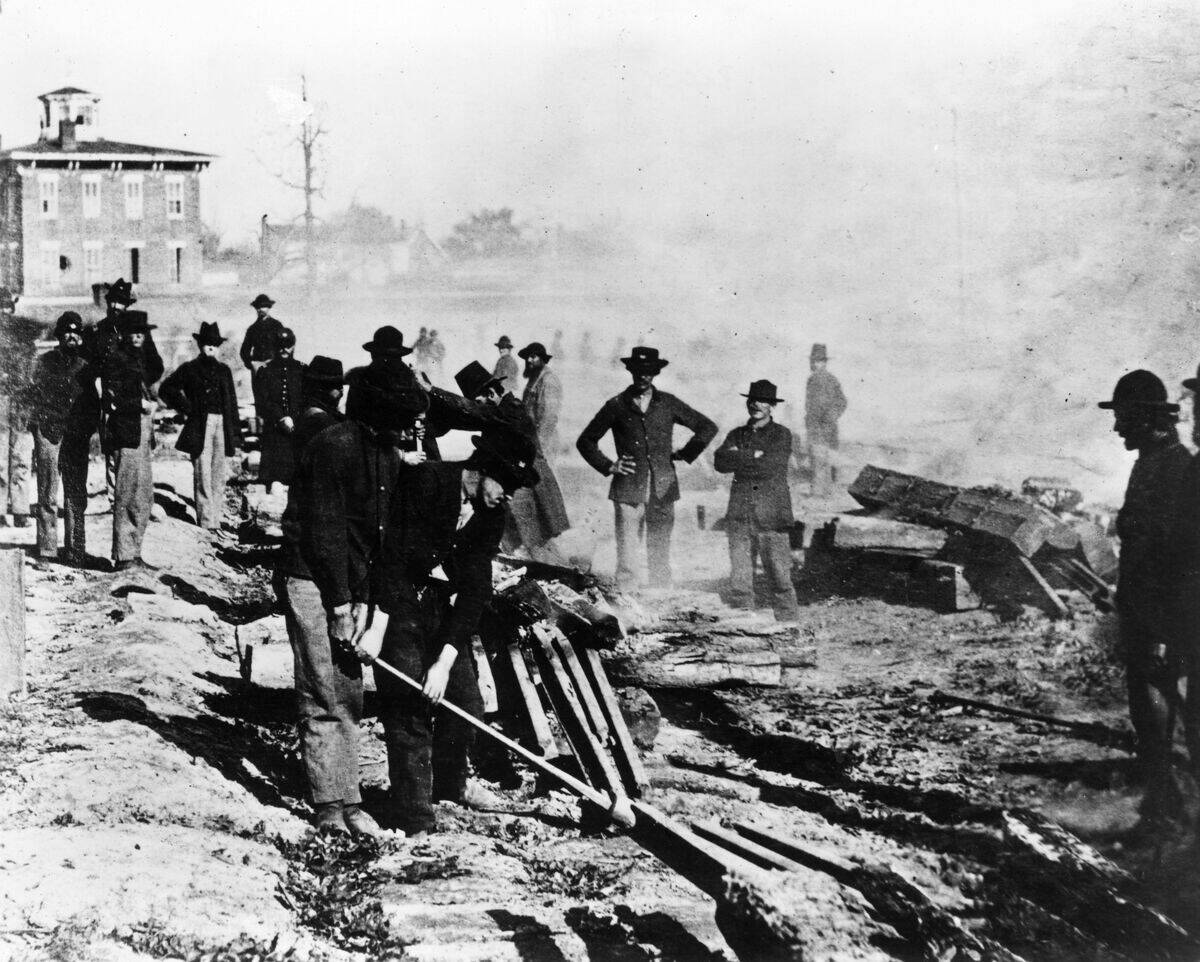
Union General William Tecumseh Sherman conducted a destructive campaign through Georgia in 1864 that marked a major turning point in the war.
Sherman’s troops captured Atlanta, then worked to disable the Confederacy’s capacity to wage war by killing livestock, burning fields, and tearing up railroads. Their march from Atlanta to Savannah left a 300-mile path of destruction.
Sherman’s march broke the South’s resolve.
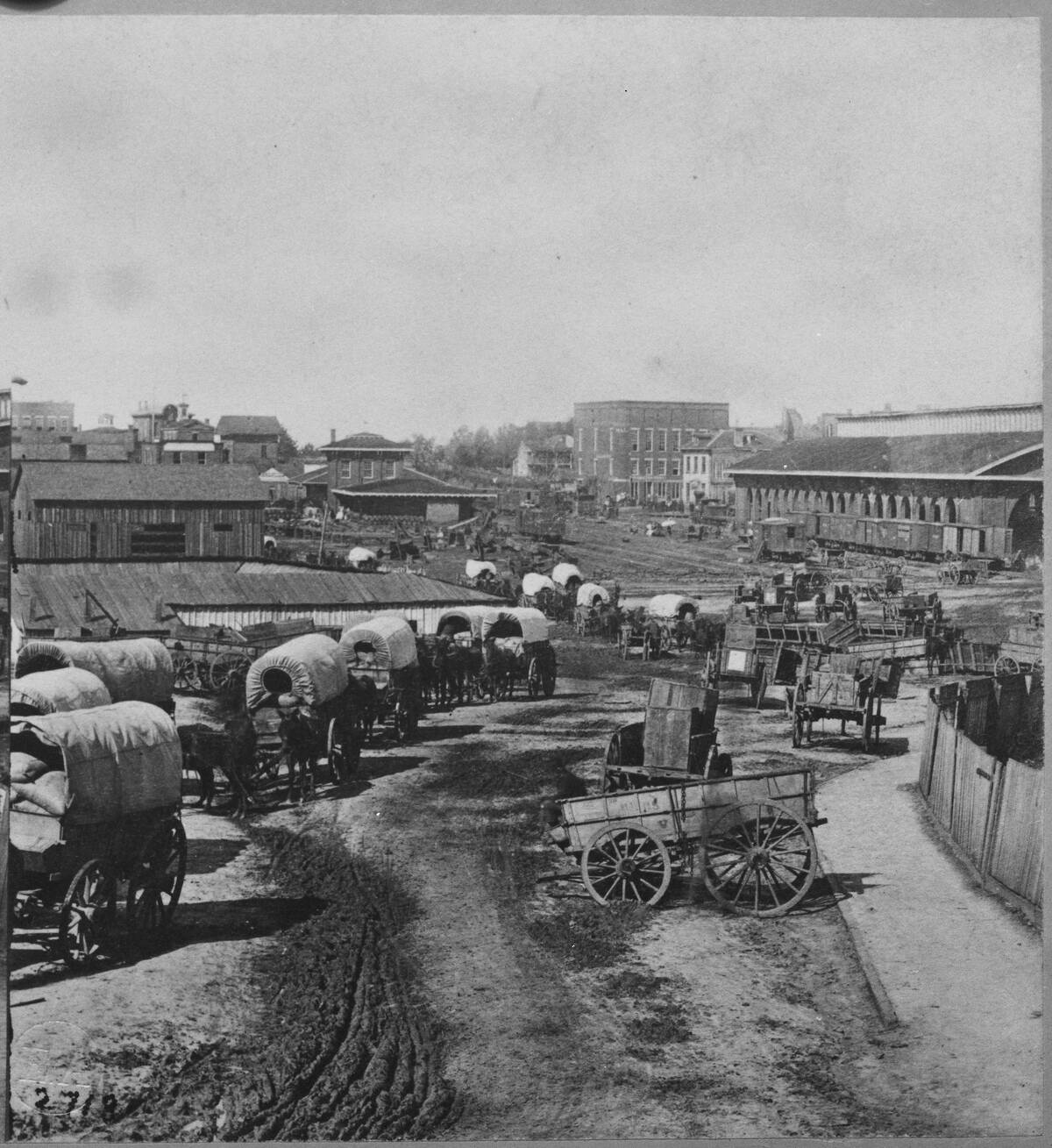
This image shows Atlanta during Sherman’s occupation of the city, a period that weakened resolve not just in Atlanta, but in the entire Confederacy.
This was Sherman’s goal, of course, and his march is generally regarded as a ruthless but effective strategy to break down the Confederacy.
All the while, civilians were on the edges of the conflict.
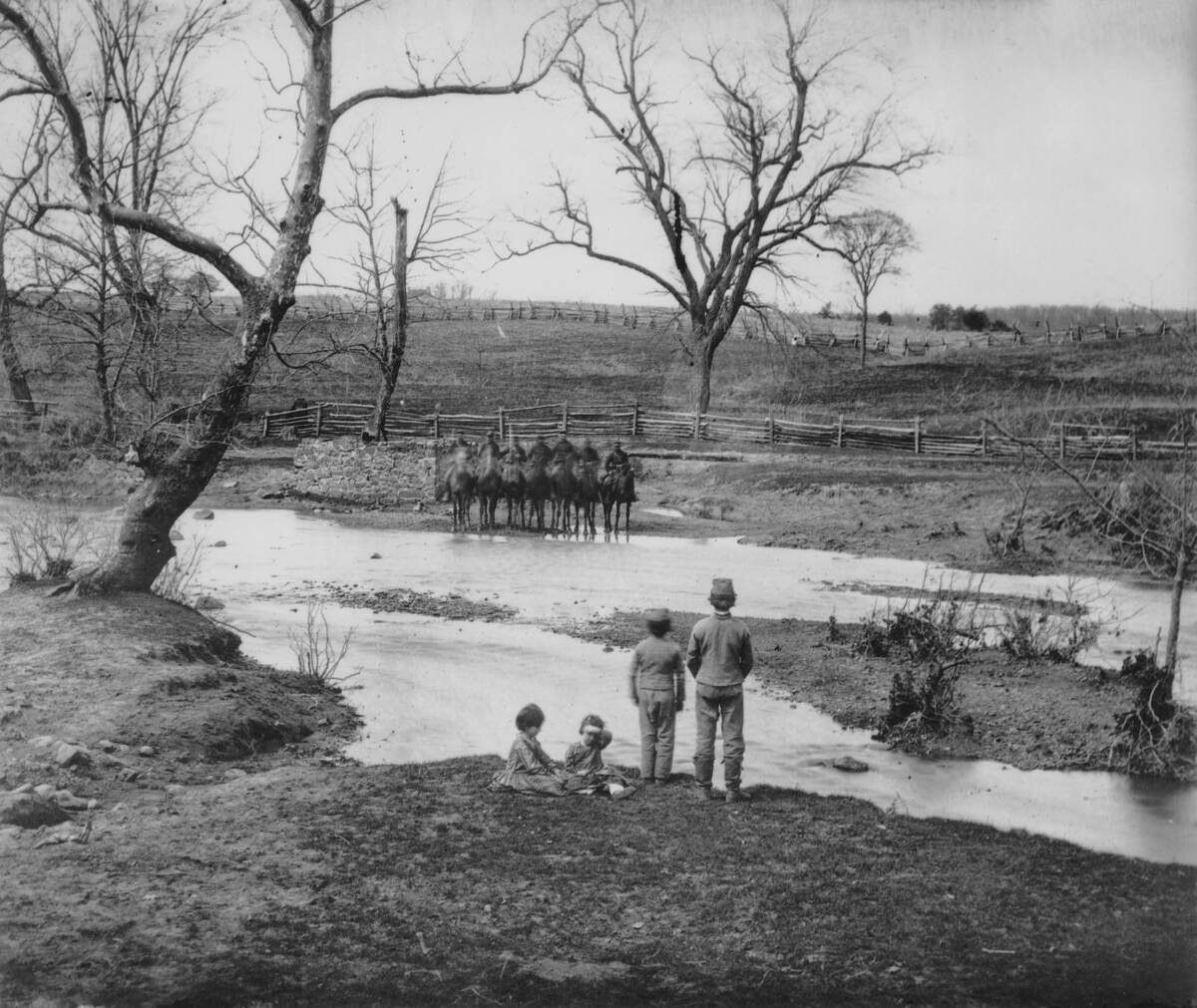
The Civil War took place across numerous states that were already thoroughly populated by the 1860s, which means that civilians often found themselves uncomfortably close to the fighting.
These children are staring across a river at a group of Union soldiers, who have stopped to water their horses during a lull in the fighting.
New technology was on full display.
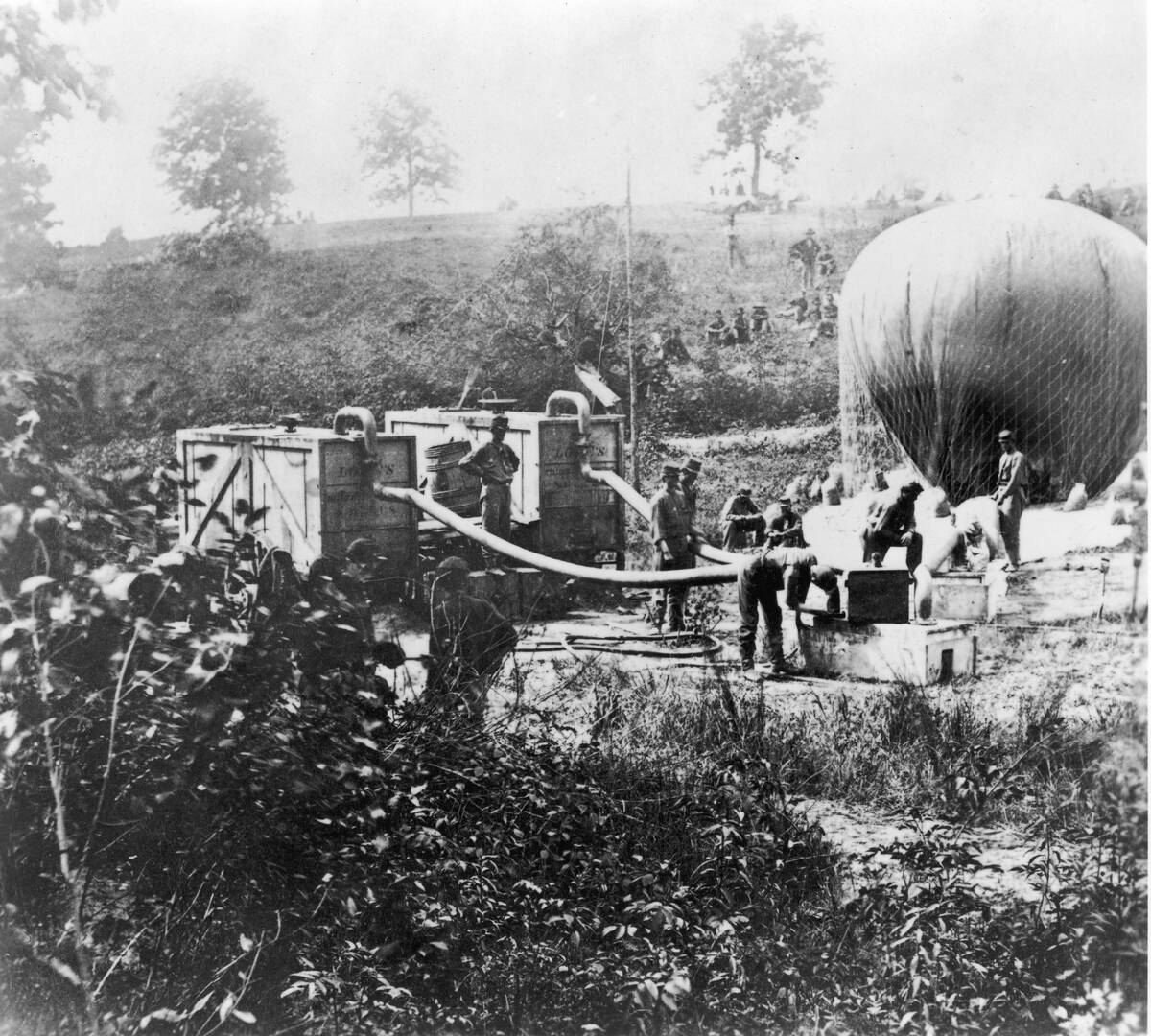
Both sides in the conflict experimented with novel forms of warfare that had rarely, if ever, been seen before. The Confederates experimented with submarines, while the Union had an official Balloon Corps.
This early example of aerial warfare didn’t consist of much — literally a balloon that was tethered to the ground for observation purposes. Still, it gave generals a critical bird’s eye view of the battlefield.
Some regiments became famous.
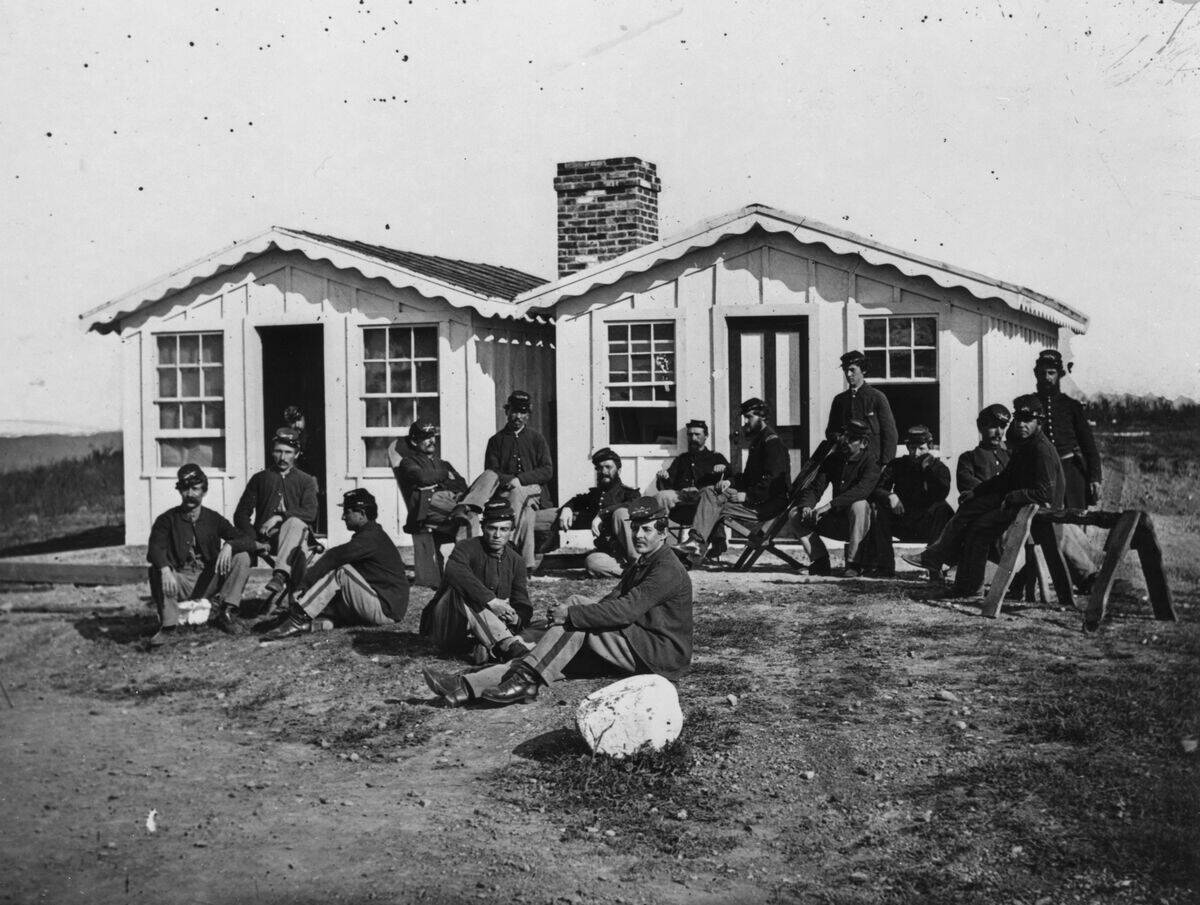
Whether a soldier sought glory or not, their movements were dictated by generals, and some regiments didn’t see significant fighting during the war.
The 119th Pennsylvania Infantry, seen here, saw action in several key battles, including Antietam, Fredericksburg, and Gettysburg.
Railroad hubs played a big role.
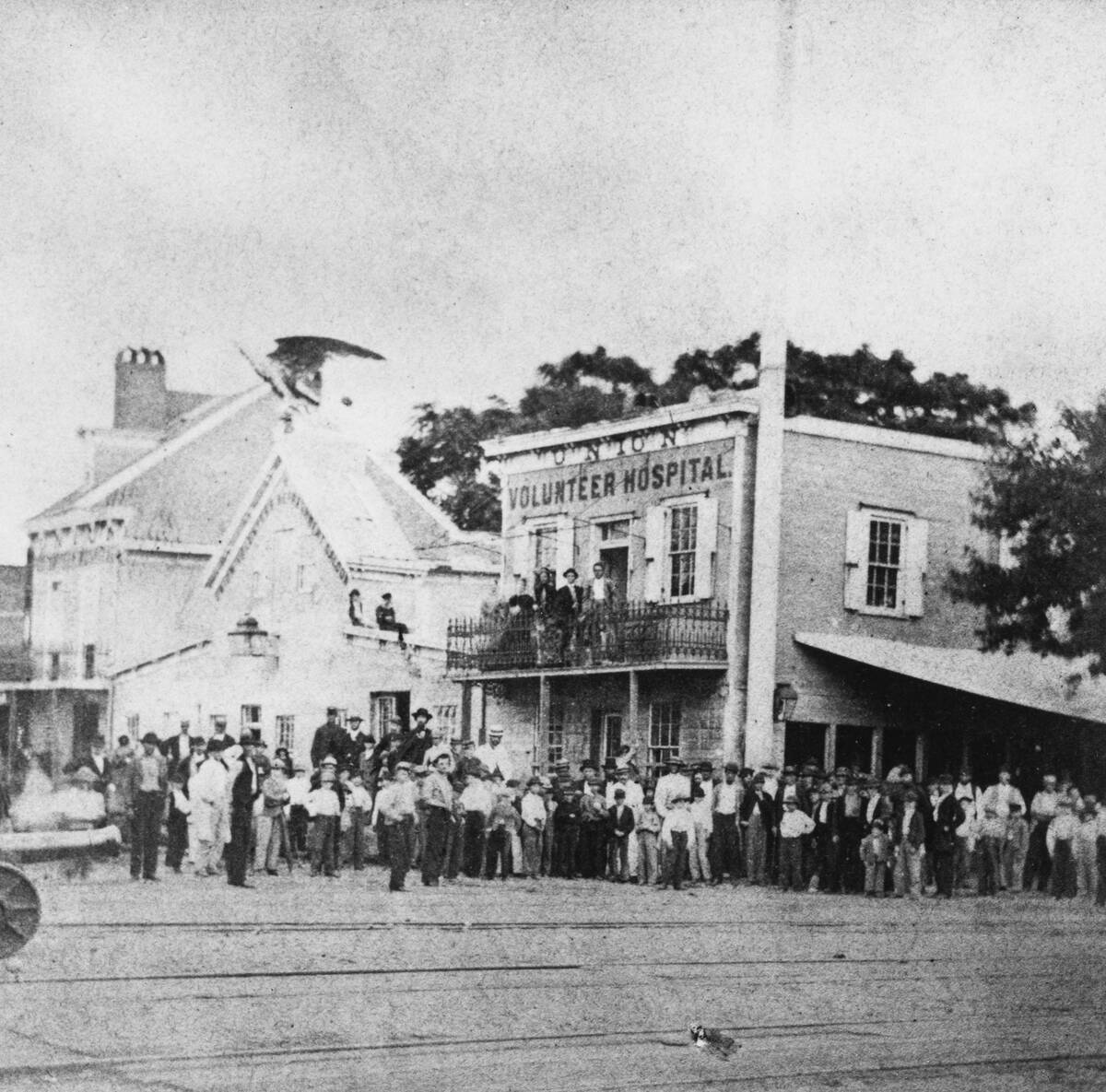
This railroad hub in Philadelphia was a hive of activity, as it marked a strategic point for the transportation of troops, supplies, and other equipment.
Both sides in the Civil War relied heavily on railroads, which is partially why Sherman’s march, in which he tore up Confederate railroads, was so devastating.
Petersburg, Virginia was a critical site.
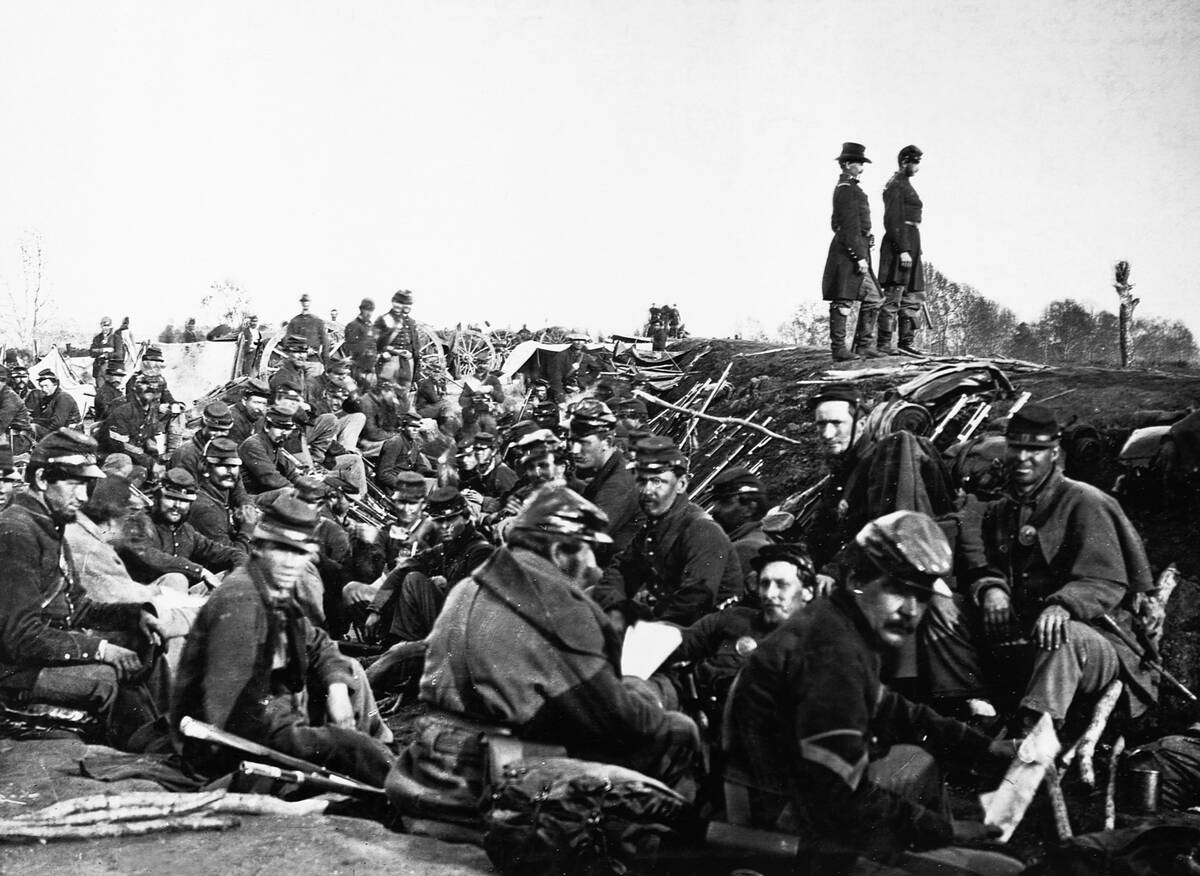
Soldiers can be seen in the trenches while generals survey the battlefield in Petersburg, Virginia. This was part of a prolonged siege that lasted for nearly a year.
Union General Grant engaged in trench warfare, similar to what was seen later in World War I, in a drawn-out siege that eventually forced the Confederates to evacuate.
Infrastructure was hastily built.
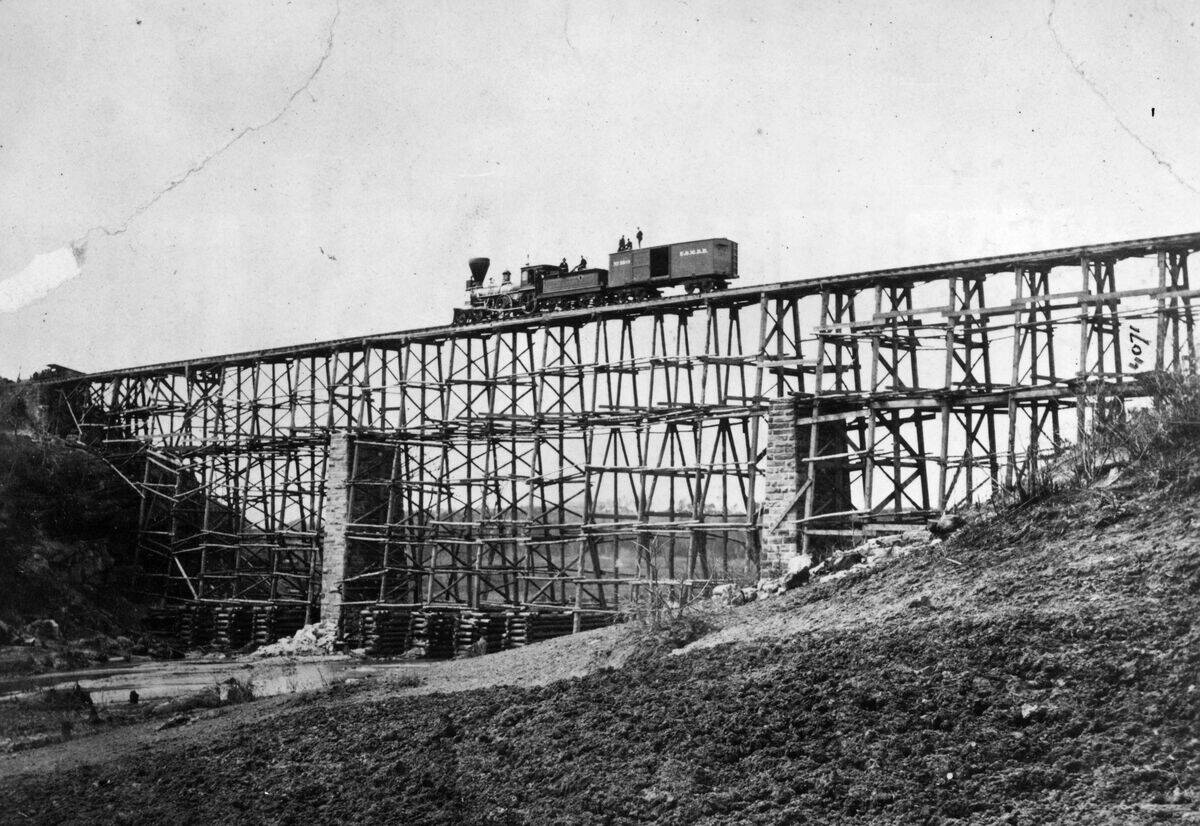
The Potomac Creek Bridge in Virginia, seen here, was a strategic location as it linked the Confederate capital of Richmond to the southern states. It was also noteworthy for being built in just nine days.
Later on, as the Confederacy grew more desperate, they destroyed their own bridge to prevent Union troops from using it.
Camp life had unusual forms of entertainment.
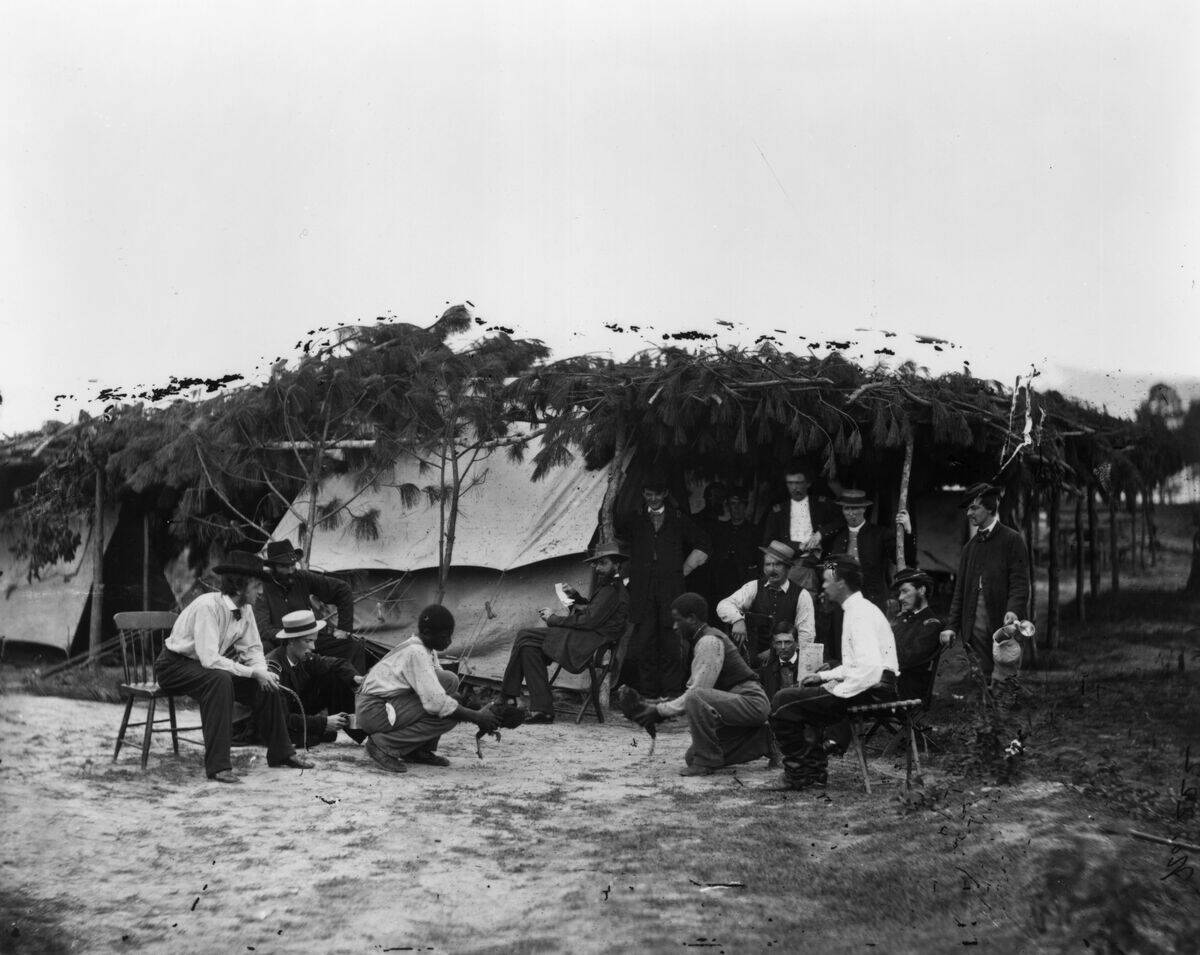
Soldiers took part in improvised sports during their downtime, including the nascent sport of baseball.
On a more grim note, cockfighting — a bloody sport where roosters were made to fight each other — also proved popular. This image shows soldiers keenly observing one such contest.
Not all battles were conclusive.
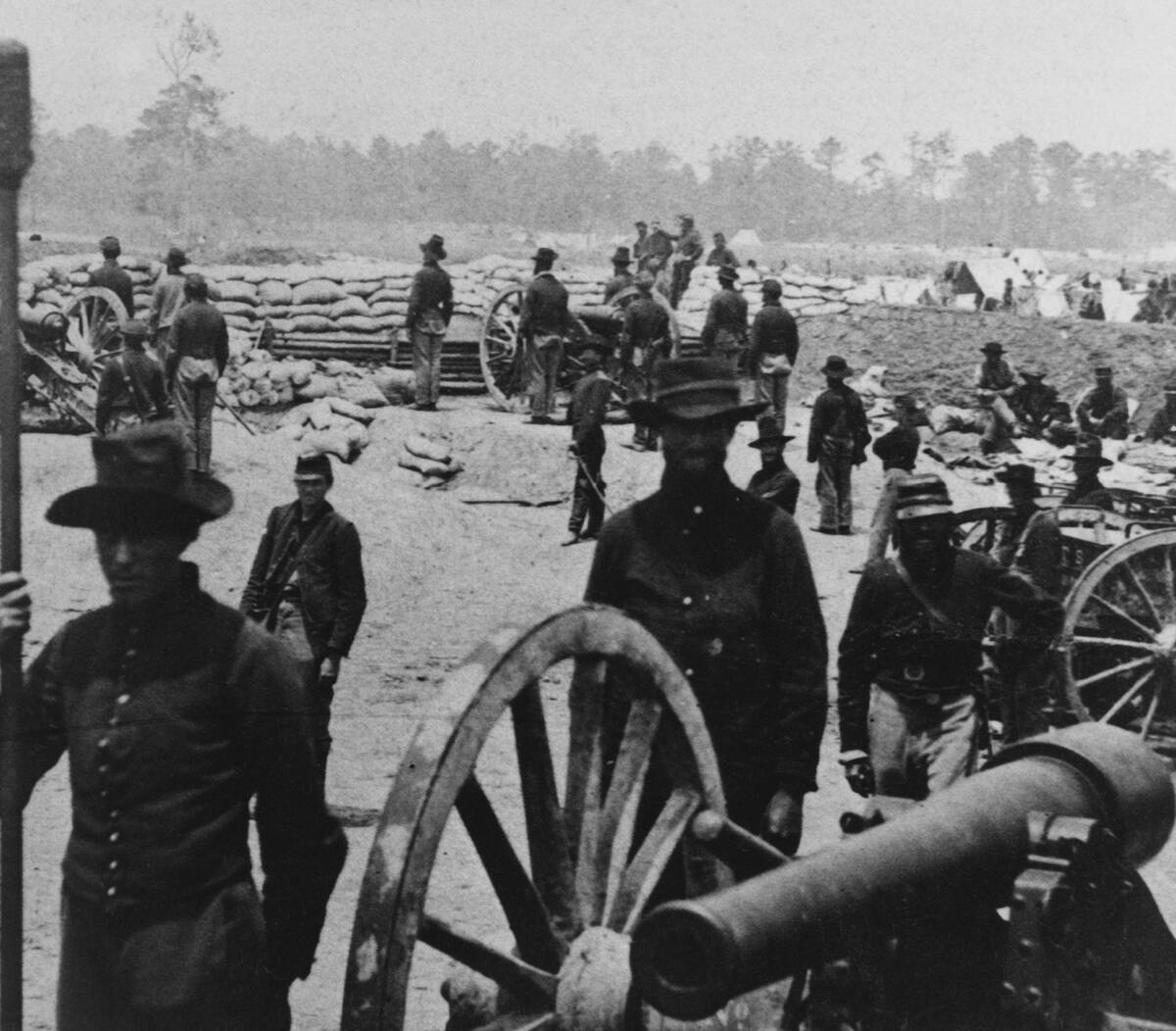
While the pivotal and decisive battles of the Civil War are well known to history buffs, the conflict also produced many battles with mixed or inconclusive results.
One such event was the Battle of Seven Pines near Richmond, Virginia. Both sides suffered heavy casualties, and the battle is best known for the ascendance of Confederate General Robert E. Lee, who was pressed into the role after his predecessor was wounded.
Strategy was discussed anywhere and everywhere.
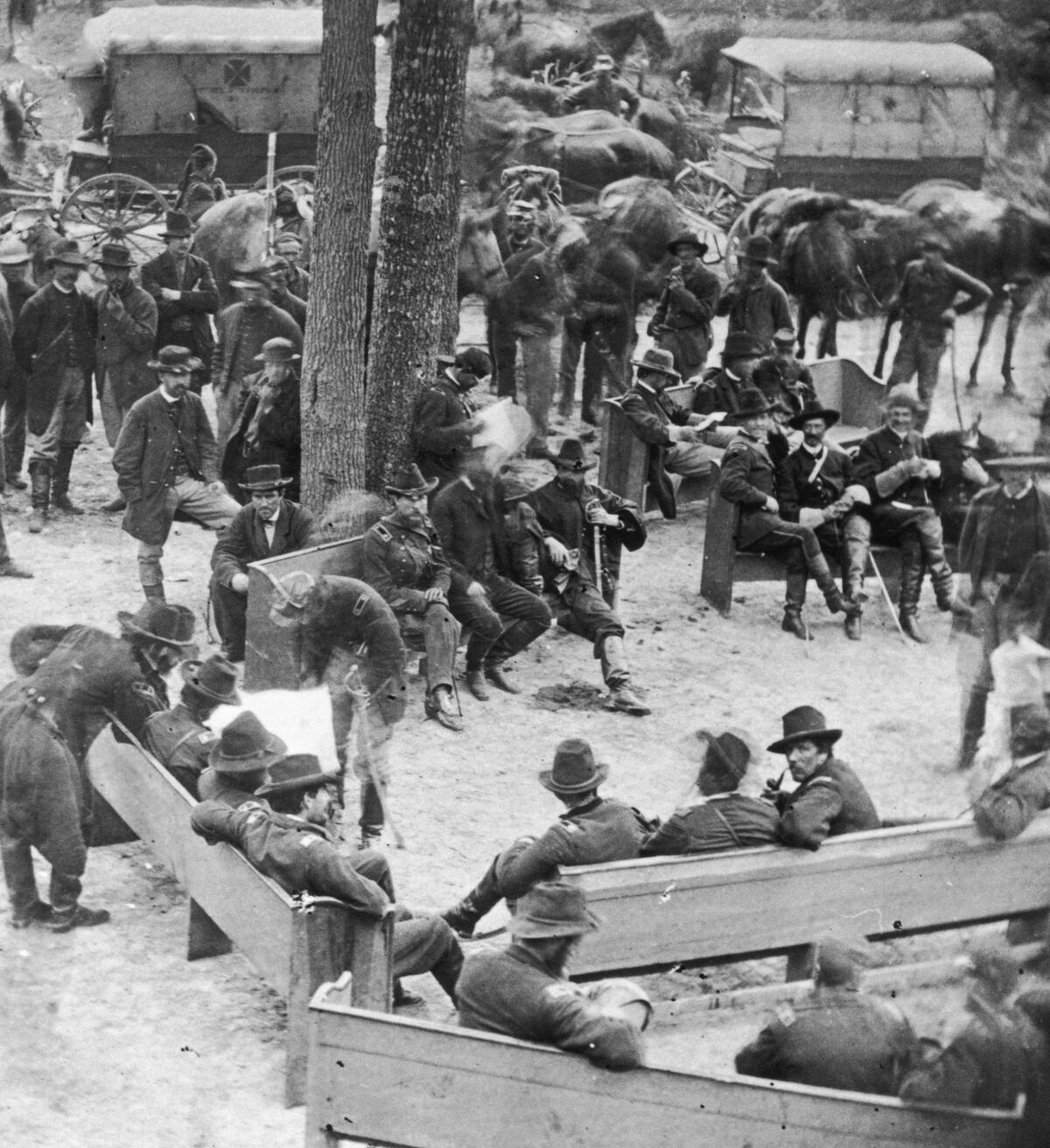
There was a degree of secrecy when it came to high-level planning, but in general, top officials would work on their battle plans anywhere they could find.
This image shows Ulysses S. Grant leaning over two seated men to study a map. They’re seated just outside of a church, and have pulled pews out of the building to sit on.
Manassas was a critical point.
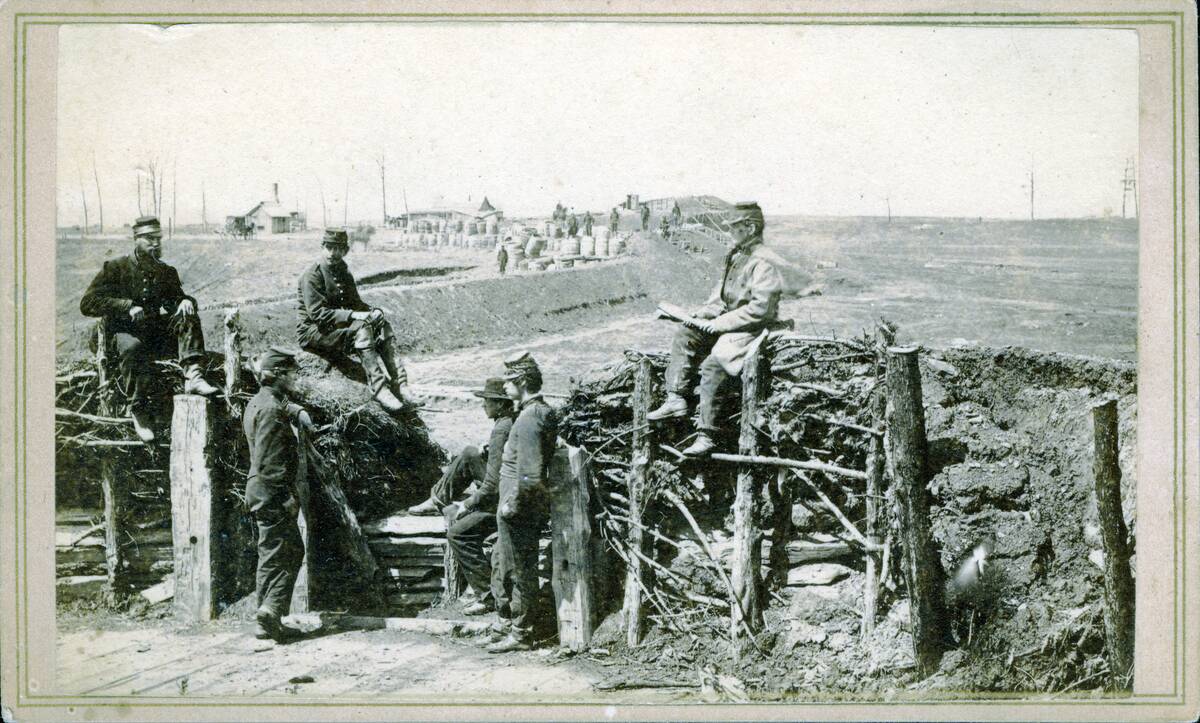
The fortifications at Manassas, Virginia were first constructed by Confederate troops after the Confederacy won the First Battle of Bull Run in 1861.
These fortifications helped to protect key locations while also establishing strong defensive positions that proved crucial in the Second Battle of Bull Run the following year.
Mail was a vital lifeline.
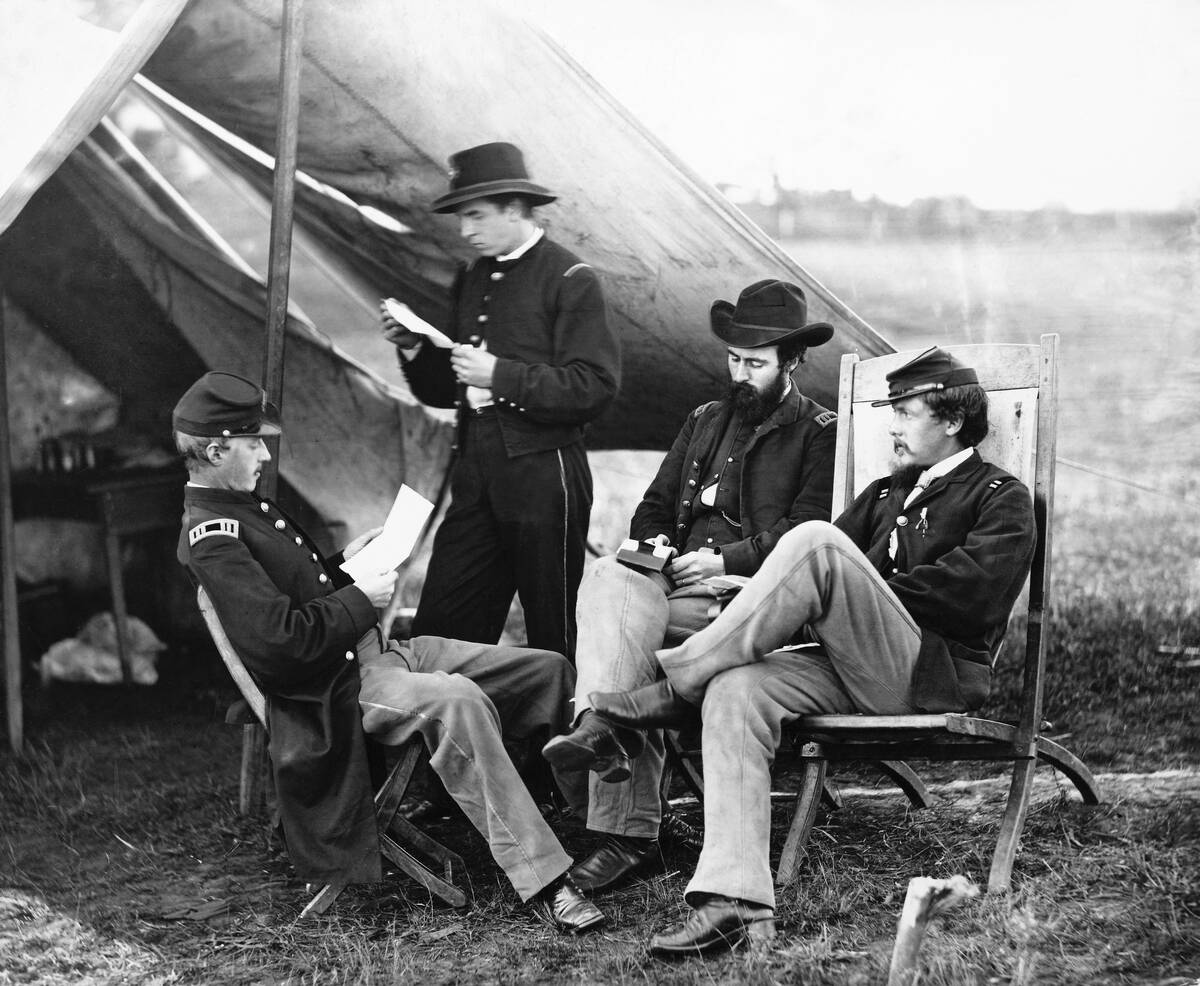
Even amidst the chaos of the Civil War, mail delivery still took place in both the South and the North — despite some challenges.
After the Union imposed blockades on the South, mail delivery became more difficult for the Confederacy. The personal letters sent and delivered during the war served as a historical record of wartime experiences.



